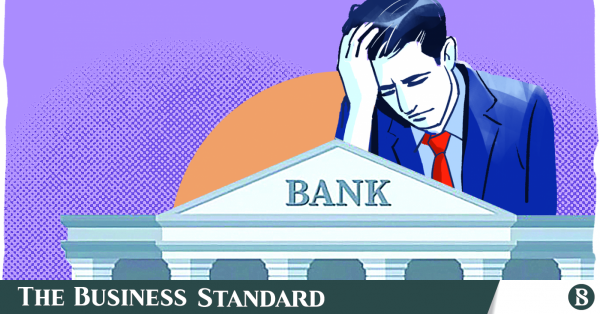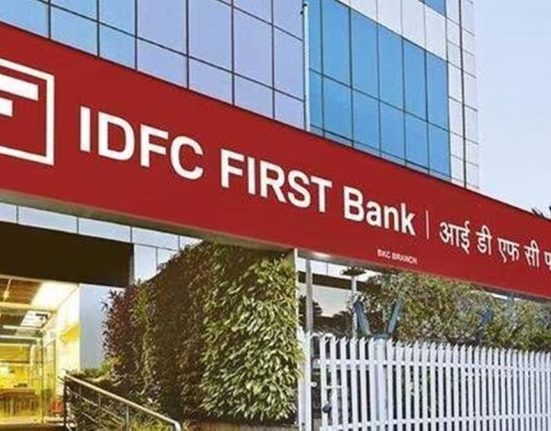The banking sector in Bangladesh has stood on the edge of credibility for decades. Once regarded as the bedrock of economic stability, banks are now viewed by many with deep scepticism. Confidence in the sector does not collapse overnight; rather, it erodes slowly, undermined by repeated cycles of poor governance, nepotistic lending, regulatory capture, and a chronic lack of accountability.
High-profile loan scams, non-performing loans (NPLs) nearing alarming levels, and politically directed credit allocations have left depositors anxious and investors wary.
At the core of this instability lies the explosive growth of NPLs, which had reached a dangerously high level of Tk 3.46 trillion by the end of 2024, according to Bangladesh Bank. This represents over 20% of all outstanding loans, with state-owned banks disproportionately affected due to politically sanctioned, often unrecoverable, credit. When combined with stories of large-scale loan scams, state-endorsed defaults, and crony lending, the reasons behind the public’s vanishing trust become painfully clear.
An analysis of the NPL ratio over the past decade reveals a troubling trend culminating in a full-blown crisis. The ratio rose steadily from 6.10% in 2014 to a peak of 10.30% in 2018, reflecting deepening inefficiencies in loan recovery and flawed lending practices.
A temporary decline followed, reaching 7.10% in 2020, likely due to regulatory leniency during the Covid-19 pandemic that delayed loan classification. However, the ratio remained persistently high between 2021 and 2023, hovering around 8–9%, indicating unresolved structural weaknesses.
Alarmingly, in 2024, the NPL ratio surged to 20.20%, more than doubling in a single year. This sharp rise is attributed to the expiry of pandemic-era forbearance policies, stricter classification rules, and the formal recognition of previously concealed bad debts. The spike signifies a severe deterioration in the sector’s financial health, raising serious concerns about banks’ ability to lend, retain depositor confidence, and support sustainable economic growth.
The long-term fallout from such a chronic situation is profound. As bad loans accumulate, banks become increasingly risk-averse, curtailing fresh credit, particularly to small and medium enterprises (SMEs) and new entrepreneurs. This stifles business expansion, innovation, and job creation.
A high NPL ratio also undermines depositor trust. Concern for the safety of their savings may prompt individuals to shift funds to state-owned or foreign banks, or even to informal, unregulated channels. At the same time, banks are required to allocate higher provisions for bad loans, which erodes profitability and reduces capacity to invest in modernisation, digital infrastructure, and staff development.
When state-owned banks suffer mounting losses, the government often steps in to recapitalise them using public funds. This diverts scarce taxpayer money away from critical sectors such as health, education, and infrastructure.
Furthermore, a dysfunctional banking sector weakens the broader financial ecosystem. Restricted credit flow hampers industrial production, investment, and GDP growth, while also exacerbating inflation, unemployment, and macroeconomic volatility. When defaulters repeatedly escape consequences, it fosters a culture of willful default and discourages honest borrowers, creating a vicious cycle of poor financial discipline.
The crisis also diverts the attention and resources of the central bank and regulators towards firefighting, leaving little room for long-term reforms or innovation. In the global arena, international investors, credit rating agencies, and development partners may lose confidence in Bangladesh’s financial credibility, which could raise borrowing costs and deter foreign investment.
Unless the NPL crisis is urgently addressed through deep structural reforms, effective legal enforcement, and decisive political will, it threatens to undermine Bangladesh’s financial stability and long-term economic trajectory.
A comprehensive reform agenda is essential. Legal, institutional, and operational overhauls must be undertaken in tandem. Strengthening loan recovery mechanisms through fast-track tribunals, enforcing tougher bankruptcy and foreclosure laws, and enhancing the Credit Information Bureau (CIB) are critical first steps.
Depoliticising bank governance, increasing transparency through the public disclosure of wilful defaulters, and establishing independent asset management companies can facilitate the clean-up of toxic assets. Embracing technological solutions, such as AI-driven credit assessment and digital loan monitoring, will significantly enhance risk management.
Simultaneously, banks must reward responsible borrowers and penalise habitual defaulters through differentiated interest rates and credit blacklisting. Government recapitalisation of state-owned banks should be made conditional on meeting institutional reform targets and operational benchmarks. Establishing a high-level, independent banking reform commission, backed by strong political leadership and public oversight, is crucial to restoring credibility and investor confidence.
The loss of trust in the banking system is not irrational—it is a logical consequence of years of neglect, corruption, and broken promises. However, trust can be rebuilt if the reform agenda is bold, sincere, and inclusive.
The future of Bangladesh’s banking sector—and, by extension, its economy—depends on whether we choose to confront the uncomfortable truths or continue to paper over them. Reform will be difficult and politically costly. But inaction is far more dangerous. A banking sector lacking public trust cannot drive a growing economy, finance innovation, or deliver inclusive development.
It is high time to act decisively and transparently. Only by holding the corrupt accountable, protecting the honest, and putting citizens’ trust at the heart of banking once again can we hope to restore credibility and secure a resilient economic future.
Bithe Rani Aich is a Research Associate at the Bangladesh Institute of Governance and Management (BIGM)
Disclaimer: The views and opinions expressed in this article are those of the author and do not necessarily reflect the opinions and views of The Business Standard








